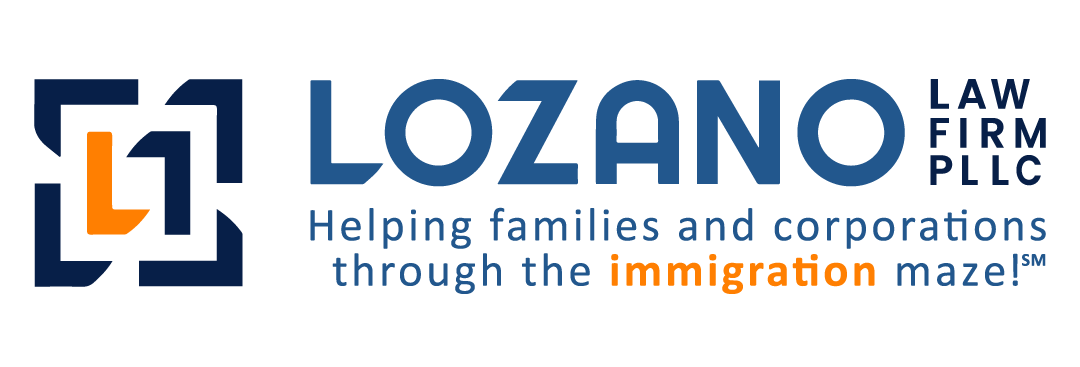The U.S. labor certification process is the first step for employer-sponsored green cards, but processing times vary. Factors like government timelines, employer readiness, and potential audits affect the duration, making planning and understanding each phase essential.
This guide breaks down the process, estimates time frames, and identifies potential delays. Understanding these steps helps employers and employees navigate the complexities of labor certification efficiently.
Understanding PERM Labor Certification
The Program Electronic Review Management (PERM) system governs labor certification for foreign workers. It ensures that hiring a non-U.S. worker will not negatively affect American job seekers. This process involves employer compliance, job market testing, and prevailing wage determinations.
Labor certification is a required step before filing for an employment-based green card. It confirms that no qualified U.S. workers are available for the job and that the foreign worker meets the position’s requirements. Employers must follow strict DOL guidelines to avoid application denials or delays.
Completing each step is essential for a successful PERM labor certification. Employers must meet job advertising and wage requirements while preparing thorough documentation. Mistakes or incomplete filings can lead to significant delays.
Understanding how PERM certification works sets the foundation for a successful employment-based green card process. Employers and employees must follow DOL regulations closely. The next section will cover this critical process’s key steps and estimated timelines.
Application Key Steps & Estimated Timelines
Careful planning is required for labor certification to be successful. The process includes defining job requirements, obtaining a prevailing wage determination, completing recruitment, and submitting the application to the DOL. Each step has specific rules and timeframes.
Job Description & Requirements
Employers must create a detailed job description specifying duties, skills, education, and experience. The job requirements must be based on business necessity and should not identify a specific foreign worker. DOL regulations strictly prohibit excessive or unnecessary qualifications.
Prevailing Wage Determination
Before starting the recruitment process, employers must obtain a prevailing wage determination from the Department of Labor (DOL). It sets the minimum salary for the role and ensures it aligns with industry norms and geographic wage standards to maintain fair compensation.
The DOL typically processes a prevailing wage determination in two to three months. However, delays can occur due to backlogs or necessary employer adjustments. To avoid disruptions in the hiring timeline, employers should submit their requests as early as possible and anticipate potential processing slowdowns.
Recruitment Process
Employers must actively test the U.S. job market by advertising the position. It includes placing job orders with state workforce agencies, newspaper ads, and additional recruitment methods. The employer can proceed with the PERM filing if no qualified U.S. workers apply.
Further, employers must conduct recruitment over a minimum of 30 days but no longer than 180 days before filing the PERM application. The process includes advertising the job, reviewing applications, and documenting results.
Application Submission
After recruitment, the employer submits ETA Form 9089 to the DOL and certifies that it has completed all steps. A well-prepared application reduces the risk of processing delays or audits. Standard processing can take 12 months or longer.
If selected for audit, employers may be required to spend up to a year processing the application. If the DOL audits the case, employers must respond within 30 days. The application then returns to the processing queue, significantly extending the timeline. Employers should ensure all documentation is complete to avoid unnecessary delays.
Understanding the steps and estimated timelines helps employers plan. However, various factors can influence the duration of the process. The next section explores these potential delays.
Factors Influencing Processing Times
Several factors affect the time for a labor certification to be approved. Employers should be aware of these potential challenges. Delays can impact hiring plans, business operations, and a foreign worker’s ability to secure permanent residency.
Workload & Backlogs
High volumes of applications can slow processing times. DOL processing speeds fluctuate based on demand, causing delays beyond an employer’s control. Checking the DOL’s processing time updates helps employers anticipate delays and adjust their hiring and sponsorship timelines accordingly.
Limited Resources
The DOL operates under strict budget constraints, and inadequate funding has led to a shortage of personnel available to review PERM applications. With limited staff handling a rising number of cases, processing times have stretched longer than expected. This shortage impacts all steps of the PERM process, from wage determinations to employer audits.
New Filing Systems & Form Changes
The transition to updated forms, including the revised ETA Form 9089, has added further delays. Employers and legal representatives must adapt to new submission requirements, while DOL staff adjust to reviewing applications under a modified system.
Additionally, technical issues with electronic filing platforms have slowed processing times, creating uncertainty in the timeline for application approvals. These challenges add to an already complex and time-consuming process, making it challenging to predict the adjudication of applications.
Understanding the factors that affect labor certification processing times helps employers and foreign workers prepare for potential delays. Proactive planning and staying informed on processing trends can help employers navigate these delays more effectively.
Strategies To Manage PERM Delays
Employers can take proactive steps to simplify the PERM labor certification process and speed up processing. Careful planning, thorough documentation, and strict adherence to DOL requirements can prevent common mistakes, reduce delays, and improve the chances of a smooth approval.
Start Recruitment Early
One way to expedite the process is by initiating recruitment while waiting for the Prevailing Wage Determination (PWD). Since PERM recruitment requires a waiting period, starting during the PWD stage can save time but risks delays if wage determinations change.
Initiating recruitment early may shorten PERM processing, but employers might need to restart if the prevailing wage is higher than expected. Therefore, employers must consult an immigration attorney before implementing this approach.
Ensure Accuracy In Documentation
Mistakes on Form ETA 9089 or incomplete recruitment records can result in application denials or audits, significantly extending processing times. Employers should meticulously review all documentation, including job advertisements, recruitment reports, and proof of compliance with regulatory requirements.
Track Processing Updates
Processing times fluctuate due to application volume and policy changes. Employers should regularly monitor the DOL’s updates to stay informed about delays and adjust their expectations accordingly. Being aware of potential slowdowns allows for better workforce planning.
Maintaining meticulous records of recruitment efforts and compliance is essential, as inaccuracies or missing details can lead to setbacks. Proactive management of the PERM process ensures a smoother path to certification.
Next Steps Post-Certification
Once labor certification is approved, employers must proceed with the next steps. The steps include filing the I-140 petition, adjusting status, or pursuing consular processing. Both require careful documentation and adherence to specific immigration timelines, which can significantly impact the approval process.
Filing The I-140 Immigrant Petition
The employer must file Form I-140 with the U.S. Citizenship and Immigration Services (USCIS) within six months of PERM approval. Processing times vary but typically range from four to six months. Premium processing is available for faster decision-making and reducing wait times.
Adjustment Of Status Or Consular Processing
If the foreign worker is already in the U.S., they may apply for Adjustment of Status using Form I-485. If they are outside the country, they must complete consular processing, which includes an interview at a U.S. consulate. Both options involve additional processing times and document requirements.
These steps mark the final phase of the employment-based green card process. However, seeking legal guidance can help ensure smooth application handling and prevent complications that could delay permanent residency approval.
How Lozano Law Firm Can Assist
At Lozano Law Firm, we offer skilled immigration guidance for businesses and foreign workers. Our team helps employers understand labor certification rules and meet every requirement. With extensive experience, we provide strategic support to simplify the application process and reduce delays.
We handle many employment-based immigration cases, including PERM labor certification and green card sponsorship. We recognize the challenges employers face and work diligently to prepare accurate applications. We help clients avoid unnecessary setbacks and keep cases on track by addressing compliance issues early.
Additionally, we develop legal strategies customized to each client’s specific needs. Whether you’re an employer seeking skilled talent or a foreign worker pursuing sponsorship, we offer strategic advice and proactive case management. Our firm is committed to guiding clients through every step.
Beyond legal representation, we prioritize efficiency and communication, keeping clients informed throughout the process. We monitor policy changes, anticipate challenges, and offer practical solutions. With our experience and dedication, employers and workers can approach immigration matters confidently, knowing they have skilled advocates.
The U.S. labor certification process is a critical step in employment-based immigration. Timelines vary based on processing delays, employer compliance, and government workload. Proper planning and legal guidance can help avoid unnecessary setbacks. Employers and foreign workers must complete each stage carefully, from prevailing wage determination to final application submission.
Seeking legal assistance can simplify the process, reduce delays, and prevent costly errors that could impact approval. At Lozano Law Firm, we provide skilled guidance, helping clients manage employment-based immigration confidently ensuring compliance with all necessary regulations and requirements.

 Thank you for contacting us. Please complete this form and one of our team members will be in touch with you soon.
Thank you for contacting us. Please complete this form and one of our team members will be in touch with you soon.



